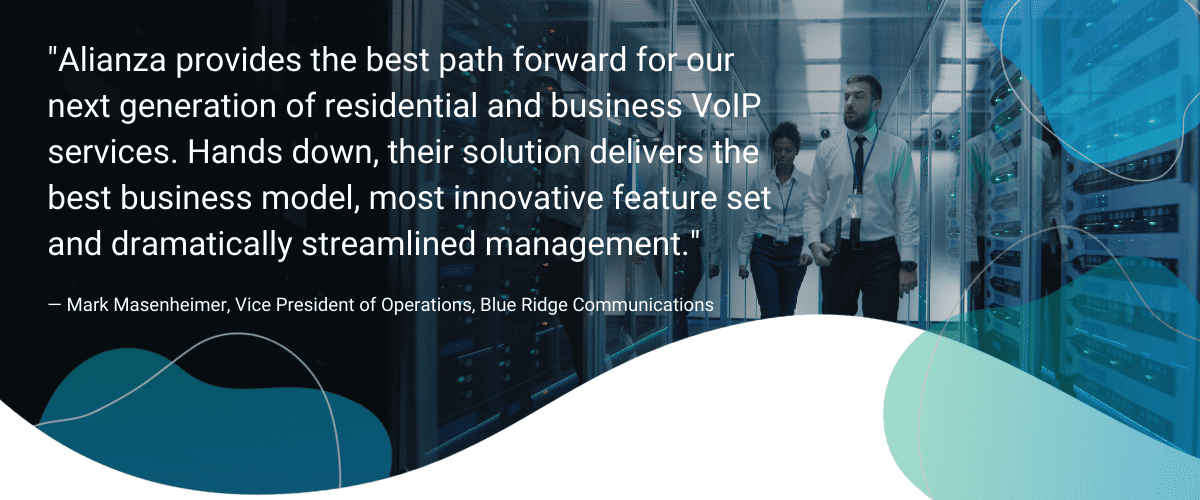
Delaying your legacy softswitch replacement or IP network transformation could be costing your business more than you know. For every type of communication service provider (CSP) — including fiber ISPs, WISPs, ILEC/CLECs, satellite, and cable MSOs — future-proofed voice communication is critical.
For most service providers, voice services continue to play a vital role in subscriber revenue. If you’re still reliant on obsolete, legacy technology that isn’t meeting the needs of your customers and end users — you don’t have to be.
You may think that a migration from a TDM or switching solutions will be too complex or resource intensive. The reality is that the transition from a Metaswitch, BroadSoft (Cisco), or Ribbon (GENBAND) system to a cloud communications platform can be smooth and fast.
Let’s take a closer look at six reasons providers are hanging up their aging Metaswitch, BroadSoft, Ribbon, and other switching solutions.
1. Eroding Margins and Rising Costs
As subscriber bases erode with the attrition of landlines to mobile phones, service providers face a drop in revenue while their current cost structure remains fixed, which cuts into their margins.
For many providers, that current cost structure includes a significant number of hidden costs. Operating or building your own network is like an iceberg in that there are a significant number of hidden costs beneath the surface. The most obvious, visible costs — like vendor hardware maintenance, ongoing investments in session border controllers (SBC), and other voice network expenses like caller name ID (CNAM), signaling system No. 7 (SS7), and local number portability (LNP) — are only the tip of the iceberg.
As the gap between costs and margins widens over time, providers need a way to keep their costs in line with revenue, so they can maintain or increase profitability. By moving to a cloud software as a service (SaaS) model, the OPEX pricing aligns with costs, and there is never any stranded capital.
2. Lack of Innovation
Service providers must, at minimum, keep pace with security and compliance regulations and market demand for new UCaaS and collaboration solutions. However, legacy solutions lack the capabilities to innovate and adapt to changing market conditions, putting service providers at risk.
It has become increasingly challenging to get vendors to support those systems (if they are even still around), and new feature development and/or compliance with the latest regulatory requirements (e.g., Kari’s Law, RAY BAUM’s Act, and STIR/SHAKEN) is non-existent.
3. Lack of Support and Parts Scarcity
Many suppliers of legacy infrastructure have been purchased by other companies (e.g., Ribbon (GENBAND, Taqua, Sonus, Nortel), BroadSoft by Cisco, and Metaswitch by Microsoft), with various priorities of supporting older equipment. As systems age or become discontinued, customers may no longer have vendor support and replacement parts will eventually be depleted.
Many softswitch products are already in their end-of-life process. For example, while service providers that rely on Metaswitch VP3510 or VP2510 hardware and a bunch of servers can still access replacements for now, they don’t have long to decide what to do next as the last date of support on certain hardware is November 30, 2023.
Even outside of COVID induced shipping delays and parts scarcity, your old hardware may not be compatible with new software releases.
4. Growing Competition from Legacy Infrastructure Vendors
Cisco is now competing with its BroadWorks service provider customers by entering the direct sales market and having end-user subscribers with its GoCo offering. Service providers are now in the awkward position of competing with Cisco, their platform provider. This isn’t ideal because it limits the go-to-market leverage for service providers and induces acute conflicts of interest around the strategic aspect of the relationship, which will impede successful partnerships, roadmap innovation, and general information flow.
5. Aging Workforce
As skilled personnel (including NOC technicians and VoIP, switch, network, voice, and full stack engineers) retire in greater numbers year over year, service providers will have an increasingly challenging time locating professionals who have the knowledge needed to manage hardware developed 20-years ago. The cost to retain those employees or train someone new will be significant. In addition, there is no incentive for new individuals entering the workforce to learn how to program an obsolete 20+ year old, legacy softswitch.
6. Single Point of Failure
Failures may occur not in the softswitch itself but from having a single switch at a single site. While many service providers have geo-split two halves of a switch, its often only from one side of a city to the other. Few providers have scaled to implement a nationwide active-active geo-diverse solution to mitigate the risks of failure and network outages.
Don’t Let Sunk Costs Stop Your Softswitch Replacement Plans
When it comes to moving from Metaswitch, Genband, or Ribbon switching solution to the cloud, many organizations fear the migration — that the services will not be the same, it may upset customers, or they won’t be able to recover revenue — and then bring a “if it ain’t broke, don’t fix it” mentality to the decision-making process.
If you’ve heard finance, IT, or technical stakeholders suggest “We’ve already invested so much into this, we need to get our money’s worth,” that is sunk cost fallacy, and it’s negatively impacting your organization’s ability to objectively determine the right path forward.
The bottom line: Yes, you made a significant investment in a now legacy phone system, but it’s no longer serving you the way it should be. As the need for legacy network transformation and softswitch replacement becomes more pressing for service providers, C-level telecom executives need to evaluate the decision from a cost savings and growth perspective.
Selecting a Great Softswitch Replacement Partner
With a traditional cap-and-grow approach or softswitch replacement, adding new customers to a new platform is relatively easy, but migrating existing customers to a new platform is one the most expensive endeavors a CSP can take on. The cost in both time and money is doubled because each subscriber must be added to the new platform and deleted from the old one. There is also the prohibitive cost of maintaining both the old and new platforms while the migration is underway, putting both platforms below critical mass for most of the migration. The longer the legacy infrastructure must be kept in place, the higher the costs and lower the margin — not to mention the risk of losing subscribers along the way. An inexperienced or new solution provider won’t have the depth of knowledge needed to understand what can go wrong during migrations or how to avoid it.
Transitioning from a Metaswitch, BroadSoft, or Ribbon switching solution to the cloud can seem cumbersome, but it doesn’t have to be. Getting the right cloud-based offering is about understanding not only the options available but also how to differentiate between okay and great solutions based on the migration experience, business model, automation capabilities, and how the cloud providers can support a safe and efficient migration.
Get started by working with an established cloud communications provider whose expertise you can rely on to deliver a fantastic migration experience.
Alianza Makes Softswitch Replacement & Network Transformation Easy
A partner like Alianza — who has successfully migrated providers from virtually every switching platform on the planet — knows how to mitigate risk and move subscribers over safely. We have migrated hundreds of thousands of subscribers for our customers to our cloud communications platform, including bulk migrations as large as 10,000 subscribers in a single day.
We help service providers navigate the entire migration process and are with them shoulder-to-shoulder (virtually nowadays) to deliver that safe migration. We describe the transition to the cloud as the last migration a service provider will ever have to make.
The time to transform your network is now!







